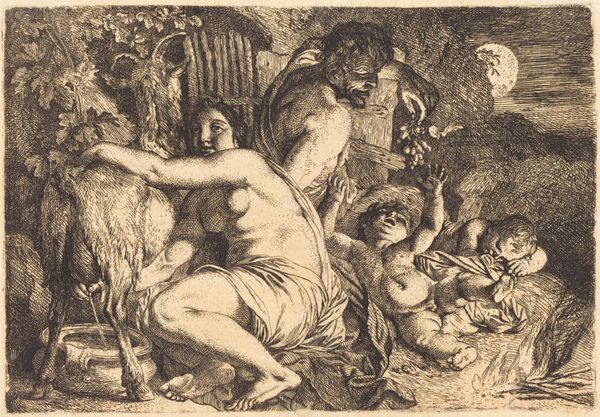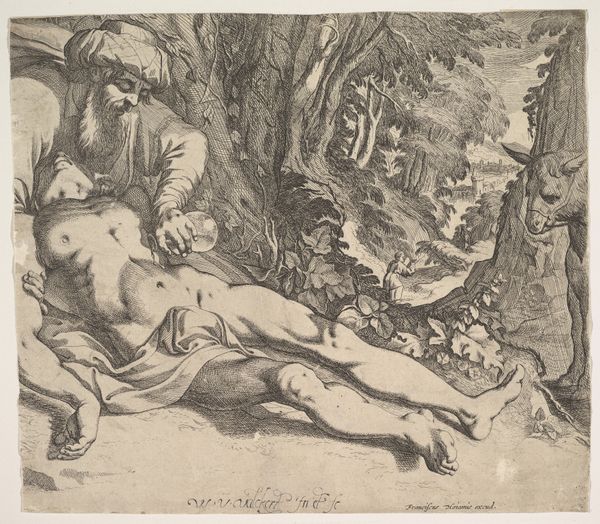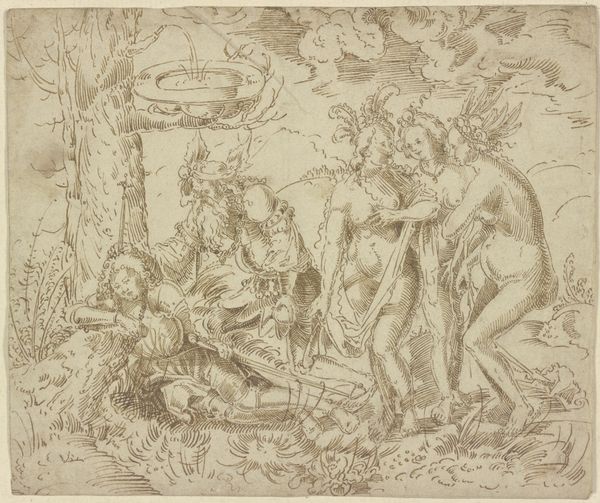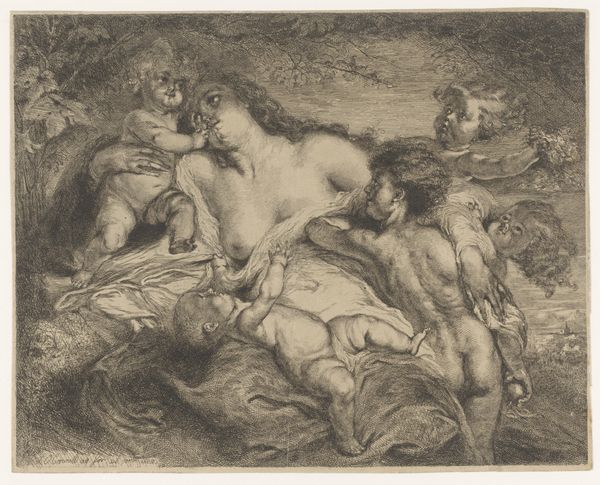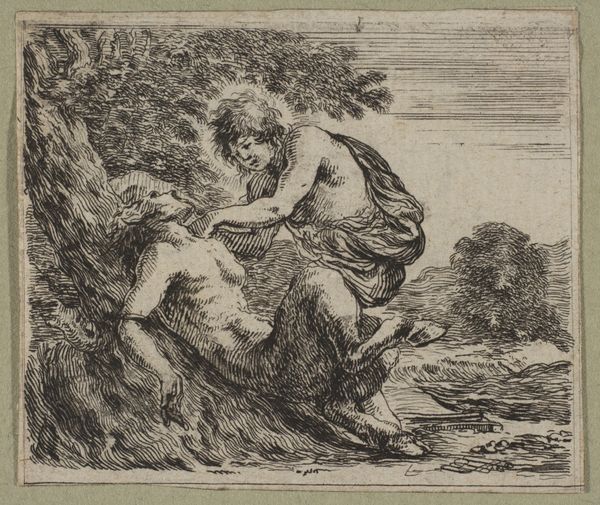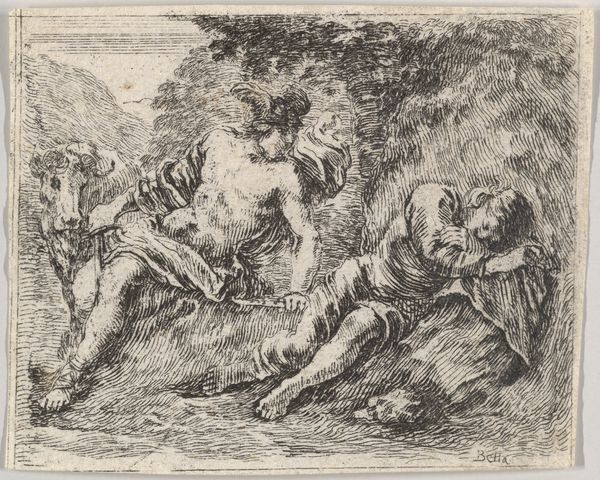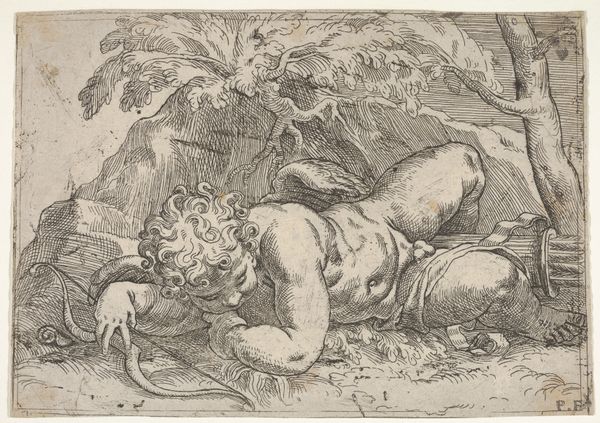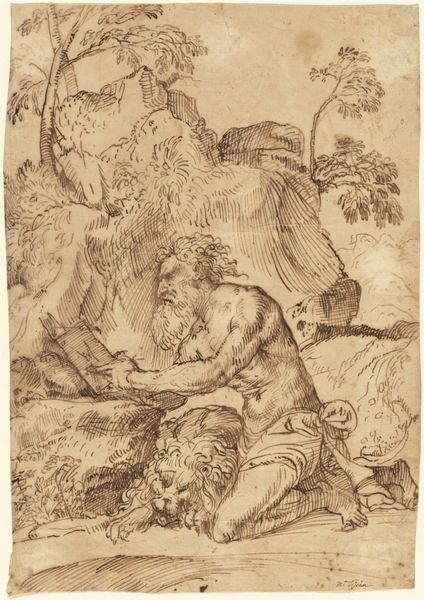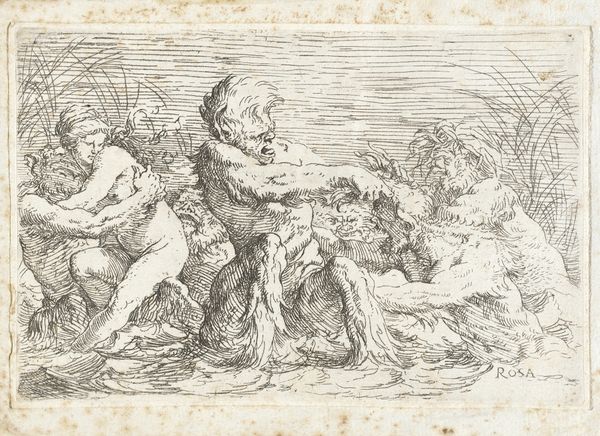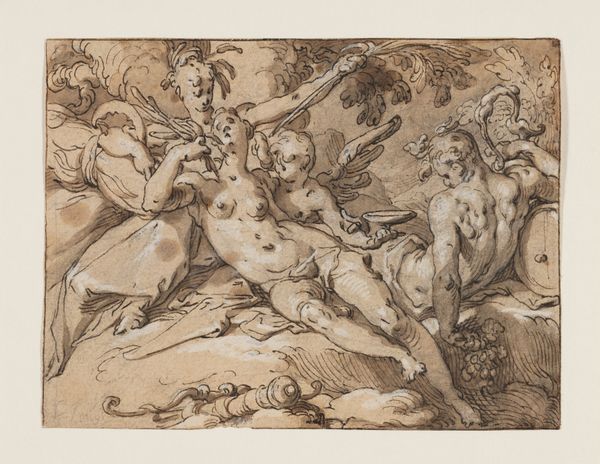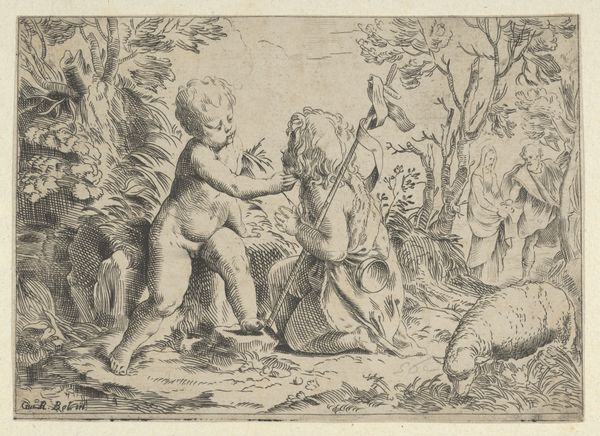
drawing, ink
#
drawing
#
allegory
#
baroque
#
ink painting
#
figuration
#
ink
#
genre-painting
Dimensions: overall (approximate): 15.2 x 17.2 cm (6 x 6 3/4 in.)
Copyright: National Gallery of Art: CC0 1.0
Editor: This is "Bacchus and Ceres", a drawing by Jacques de Gheyn II, done in ink. I find the composition quite intriguing, particularly the stark contrast between the densely shaded background and the more delicately rendered figures. What stands out to you in this work? Curator: The relationship between line and form here is crucial. Notice how de Gheyn uses hatching and cross-hatching, not to merely define contours, but to create a sense of volume and depth. Observe, in particular, the torso of Bacchus. How does the artist delineate the play of light and shadow across it? Editor: He uses really short, curved lines that follow the shape of the muscles. The ink is darker where there’s shadow and lighter where it is supposed to be light, creating roundness. Curator: Precisely. It’s through these skillful modulations of tone and texture that de Gheyn animates the surface, rendering it tactile and vibrant. What about the positioning of the figures, and their relationship to the ground and background planes? Editor: Ceres and Bacchus are placed so close together that they fill most of the scene, so that they are most clearly observed. I notice too that, at least in my perception, Ceres looks to be in a submissive posture to Bacchus who looks to be relaxed with an untroubled state of mind. Curator: Note that by observing that interaction, we come across new planes of context in understanding and thinking about this piece. Ultimately, how would you characterize the aesthetic effect achieved by de Gheyn's stylistic choices? Editor: It is the artist's specific compositional decisions that contribute significantly to the image's overall visual impact, not the subject being portrayed. This exercise underscores the relevance of formal analysis. Curator: Indeed. By attending to the formal elements, we gain insight into the underlying structure and expressive potential of the artwork.
Comments
No comments
Be the first to comment and join the conversation on the ultimate creative platform.
